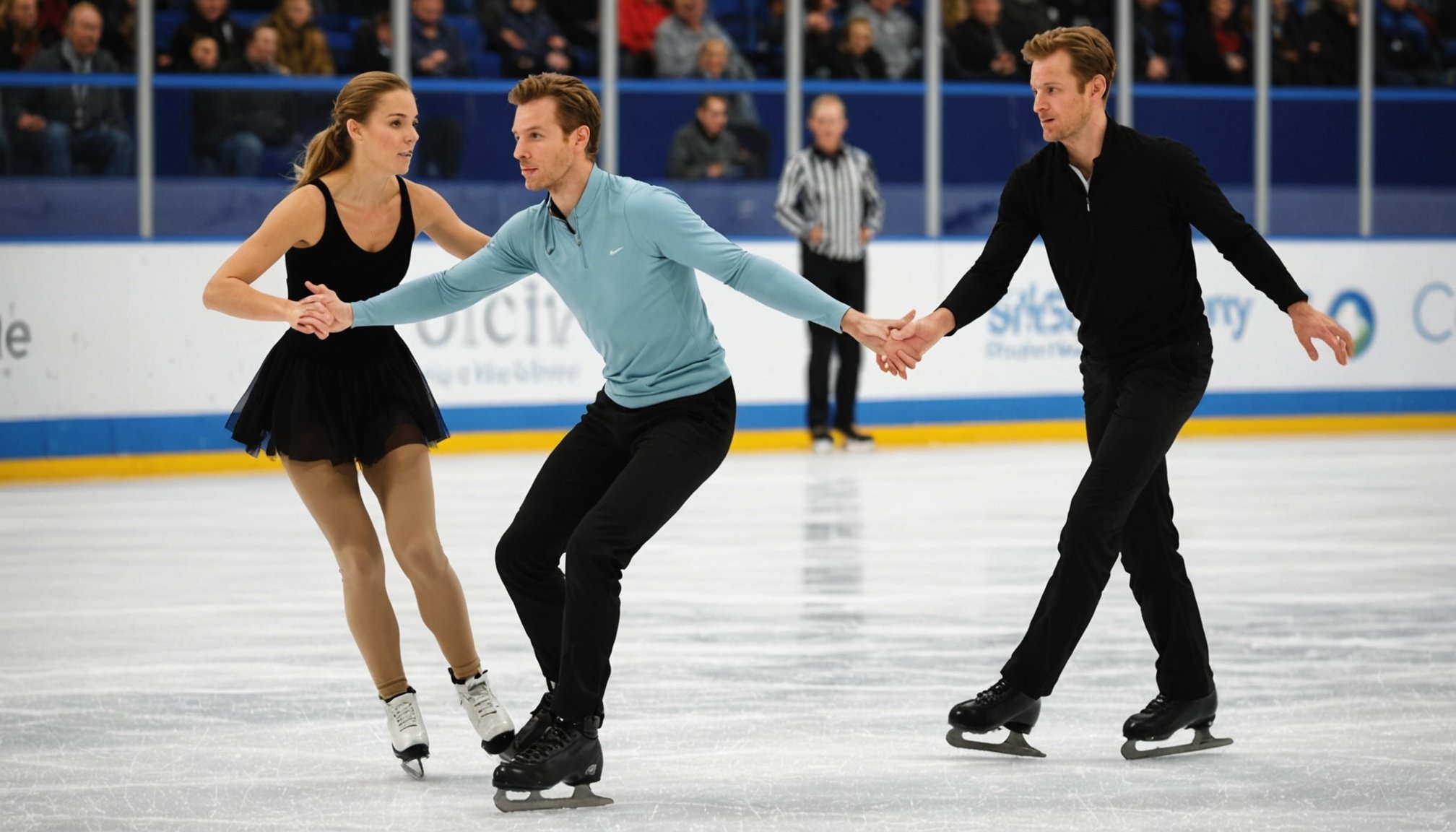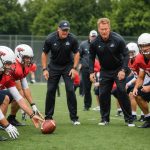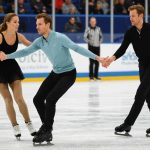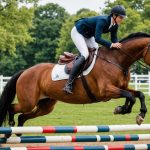Understanding Performance Anxiety in Ice Skating
Performance anxiety is a significant challenge in the world of competitive ice skating. It manifests in various ways, affecting both the mental and physical capacities of skaters. The psychology of ice skating is complex, often requiring skaters to be as mentally prepared as they are physically. Skaters experiencing performance anxiety may suffer from symptoms like increased heart rate, sweaty palms, and racing thoughts. These physical symptoms can be triggered by common stressors such as large audiences, high expectations, and pressure to perform flawlessly.
Addressing these psychological factors is crucial for improving overall performance. Mental preparation involves techniques such as visualization, positive self-talk, and breathing exercises, which can help skaters manage their anxiety. Coaches and sports psychologists often work with skaters to develop personalized strategies tailored to individual needs. This holistic approach to training stresses the importance of balancing skill development with mental resilience.
Additional reading : Enhancing endurance: proven training techniques for cyclists tackling multi-stage competitions
By understanding and addressing anxiety triggers, skaters can enhance their focus and confidence, ultimately leading to better performance. The incorporation of mental training in their routines enables skaters to compete at their best, transforming anxiety into a source of excitement and motivation.
Breathing Techniques for Calmness
Before stepping onto the ice, mastering relaxation techniques such as deep breathing can significantly enhance pre-performance calmness. These techniques are proven to lower stress levels and improve focus, allowing skaters to perform their best.
This might interest you : Elevate your equestrian game: expert tips to master jumping skills and maximize your scores
Deep breathing involves inhaling slowly and deeply through the nose, expanding the diaphragm, and exhaling fully. This simple practice can be a game changer in reducing pre-skate anxiety.
Step-by-Step Guide
- Find a quiet place: Before skating, choose a calm environment free from distractions.
- Assume a comfortable posture: Sit or stand with a straight back.
- Focus on breath: Close your eyes and take a deep breath in through the nose, hold for a few seconds, then slowly breathe out through the mouth.
- Repeat: Continue this pattern for several minutes until a state of relaxation is achieved.
Incorporating into Daily Practice
- Consistency is key: Integrate these breathing techniques into daily routines to naturally enhance relaxation.
- Persistent practice: Regular implementation will make deep breathing an intuitive response to stress.
- Mindful sessions: Allocate specific times each day dedicated solely to focusing on these exercises to gradually foster mental clarity and composure.
By diligently applying these strategies, skaters can enhance their pre-performance calmness effectively.
Visualization Strategies for Enhanced Focus
Visualization techniques are crucial in sports psychology, serving to bolster an athlete’s mental preparedness and focus. These methods, often referred to as mental imagery, are widely used for performance enhancement. It’s more than imagining success; it’s about creating detailed mental simulations that engage multiple senses, sharpening cognitive skills.
Incorporating visualization techniques often involves athletes vividly picturing their actions and outcomes. For instance, they may imagine the sensation of skates gliding smoothly over ice or the precise execution of a complex move. This method promotes familiarity and reduces anxiety, leading to improved performance.
Elite skaters, for example, rely heavily on mental imagery to boost confidence. By visualizing their routines down to every minute detail during practice sessions, they mentally prepare for competitions. As a skater visualizes their routine, they build a mental blueprint, instilling confidence and clarity before stepping onto the ice.
Techniques for effective mental imagery include using all senses, making the imagery as vivid and realistic as possible, and focusing on positive emotions. Athletes practice these techniques regularly, embedding a sense of mastery and poise in their performances. Visualization is a powerful tool, aligning the mind’s focus with the body’s actions for peak performance.
Mindfulness Practices to Reduce Stress
Mindfulness is increasingly relevant in sports, aiding athletes in achieving mental clarity and reducing stress. For skaters, mindfulness techniques can be transformative, providing tools for focus and relaxation during training and competition.
Among the most accessible mindfulness techniques are deep breathing and body scanning. Skaters can integrate these practices into their routines to promote calmness and concentration. Deep breathing involves focusing on inhaling and exhaling slowly, which helps in redirecting attention and soothing nerves. Body scanning, another simple exercise, requires consciously focusing on different parts of the body to release tension and enhance body awareness.
The benefits of mindfulness extend beyond stress reduction. Athletes who regularly incorporate mindfulness practices often notice improvements in their overall performance. With enhanced focus, skaters can better execute their technical skills. Additionally, by fostering a calmer mind, mindfulness aids in overall well-being, allowing athletes to cope more effectively with the pressures of competitive sports. Engaging in mindfulness techniques not only supports immediate stress management but also builds resilience, helping skaters maintain composure and perform at their best under pressure.
Expert Tips and Anecdotes
Navigating the world of ice skating can be daunting, but with the right expert advice, success is within reach. Insights from experienced skaters and sports psychologists highlight the importance of managing nerves and achieving peak performance.
Sports psychologists argue that nerves can be harnessed as energy if approached positively. They recommend mindfulness techniques and visualisation, allowing skaters to focus their emotions constructively during competitions. These techniques can be transformative, turning anxiety into enhanced performance insights.
Personal anecdotes from seasoned skaters often reveal a consistent theme: practice combined with mental preparedness breeds confidence. One skater shared a story about overcoming nerves by envisioning a supportive audience, which turned what once felt like an intimidating experience into one of excitement and empowerment.
Best practices shared by the professionals stress the crucial role of maintaining a balanced routine. This includes physical training, mental exercises, and rest. Integrating expert advice on performance insights through a structured regimen can significantly boost a skater’s confidence. These strategies collectively ensure skaters remain resilient and agile when facing the highs and lows of competitive ice skating. By following these expert tips and implementing such anecdotes, aspiring skaters can pave their way to success.
Practical Application of Techniques
Incorporating techniques into your routine effectively involves a pre-performance routine tailored to your specific needs. Begin by identifying habits that help focus your mind, such as deep breathing or visualization. These practices can enhance your technique implementation, providing a mental framework that prepares you for action.
Consistency is crucial. Engaging in effective practice regularly ensures techniques become second nature. This ongoing commitment not only solidifies skills but also instills confidence, crucial under pressure.
Tracking progress can be instrumental. By using simple tools like journals or digital apps, you can record your daily routines and pre-performance routine effectiveness. This allows for a clearer understanding of what works and where improvements are needed.
Adjustments play a significant role in developing these techniques further. Regular review of outcomes and adapting your approach based on performance insights ensure technique implementation remains relevant and effective. Reflect on each practice session to pinpoint strengths and areas for improvement, ensuring it’s an evolving process.
Commit to this journey with a positive and encouraging mindset, embracing both success and challenges. Through a structured approach, you’ll not only enhance your skills but also transform your practice into a powerful, productive habit.











